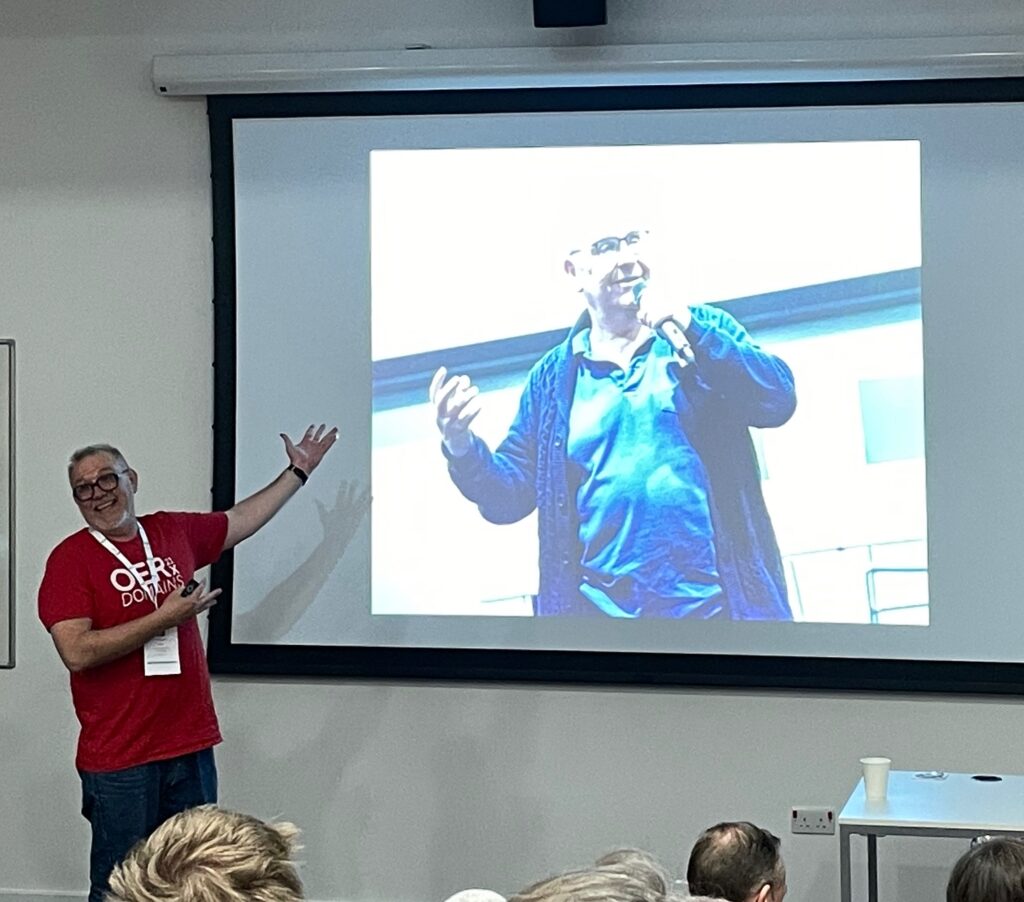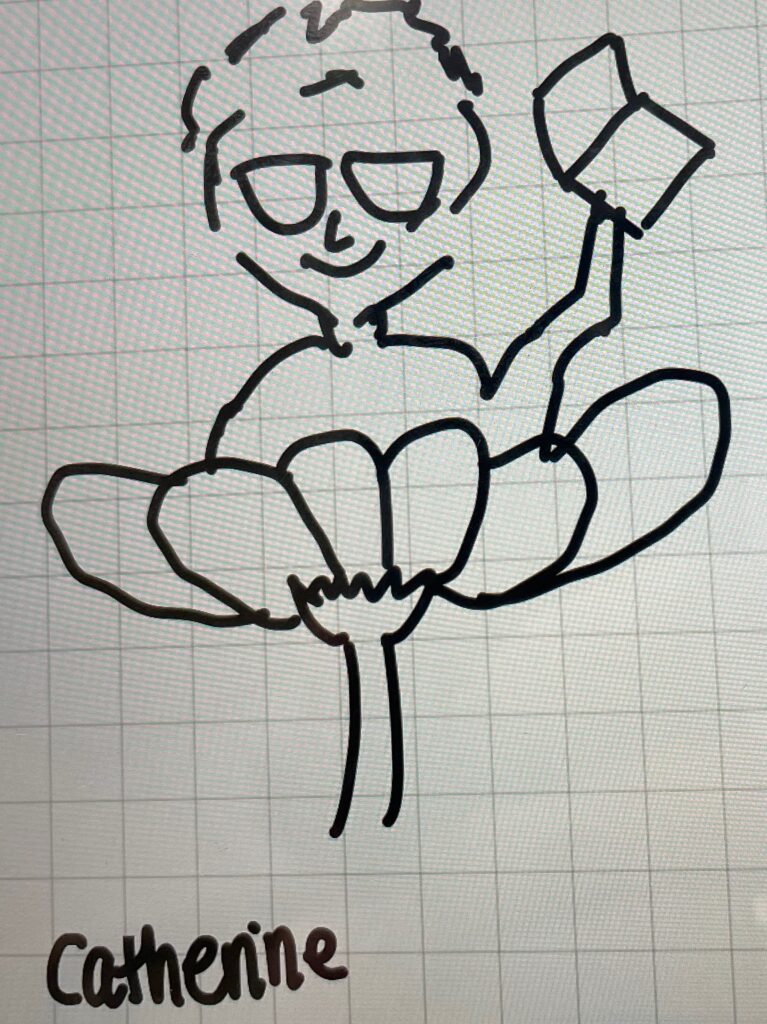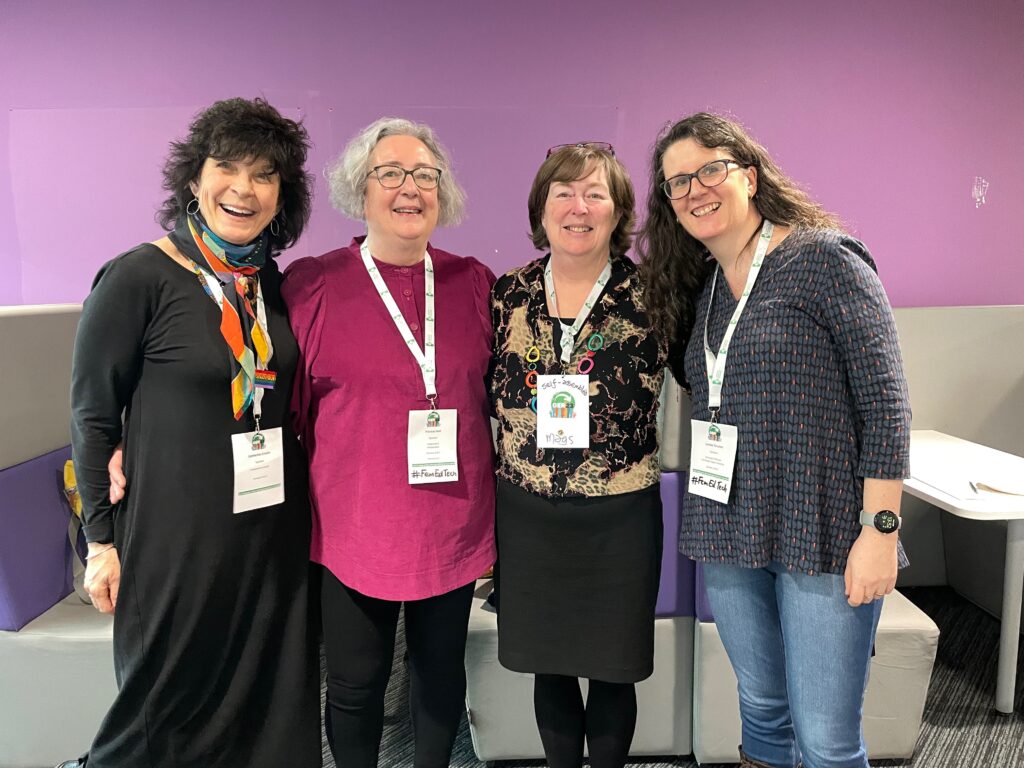After returning home from #OER23 I wrote a short blog post about the joy of returning to the conference as an in-person event – and the privilege of sharing an update on Higher Education for Good (co-edited with Laura Czerniewicz), particularly with several of the book’s contributors in the room. This “part two” blog post follows a couple of weeks of continuing conference conversations as well as exploring conference resources and blog posts.

Many OER23 reflections…
It is thrilling to see that the OER Conference continues to inspire creative responses and reflections (blogging is not dead!). I have enjoyed all of these posts:
- Lou Mycroft wrote a beautiful reflection on the conference, focusing on it as a joyful, inclusive and warm space.
- Louise Drumm wove connections from the practical activities in the ‘Guerilla EdTech responses to climate change’ workshop (more on this below) to broader ideas: “just because we are living through cycles of extinction, it does not mean we cannot exert our agency and voices, even when the scale can feel overwhelming”.
- Lorna Campbell wrote a thoughtful, reflective post about the conference, as always, even down to the beautiful train journey home from Inverness.
- Anne-Marie Scott captured some of the joy of returning to “home” to OER23.
- Helen DeWaard wrote about participating (including presenting) virtually and her experience of the “joy in open”.
- Lauren Hanks wrote a wonderful, visual story of her takeaways from the conference.
- Enilda Romero-Hall wrote about her experience as a first time OER Conference participant, including presenting her work on self-archiving practices (a collaborative project with Josh Rosenberg & George Veletsianos).
- Joe Wilson wrote a great overall summary, including his personal takeaways from the conference.
- Sheila MacNeill was inspired by the conference to write a provocative piece of speculative fiction about open education futures in an Open Scotland. Well worth a read!
- I loved listening to Martin Weller and Maren Deepwell share their reflections on an episode of Martin’s ‘Metaphors of EdTech’ podcast, focusing particularly on the thread of hope through the conference.
- Oh, and if you read just one of the OER23 blog posts, perhaps it should be Eamon Costello’s One Star Review … it says it all 🙂
And there are more! Mags Amond has been generously compiling a list of #OER23 blog posts (thanks Mags) and there are several posts on the OER23 page on the ALT website.

Keynotes and presentations
The three OER23 keynotes were well chosen for this year’s conference, with each offering food for thought and reflection (as well as smiles, paper airplanes and music). Videos of the keynotes are available on ALT’s OER23 channel on YouTube.
Rikke Toft Nørgård kicked off the conference with a brilliant series of reflections and questions on Hyper-Hybrid Futures. Her use of the metaphors of grimdark times and hopepunk, in considering hope-full futures, resonated with many. Anna-Wendy Stevenson, a musician and academic at UHI, spoke about the democratisation of music education, particularly in the Highlands and Outer Hebrides where place and connections are so important, or as Anna-Wendy said, “our classroom is our community”. In the final keynote, Dave Cormier explored the concept of abundance in education, emphasising the need for agency and context. Dave suggested that this can be done by demonstrating our humility, modelling the way we trust, and showing how we choose our values – all approaches that resonate with critical approaches to open (and OER conferences).
As always, the programme was filled to the brim with brilliant sessions (and probably the best GASTA programme ever, thanks to Tom Farrelly, Mags Amond, Eamon Costello, Lou Mycroft and Jim Groom), requiring all participants to make tough choices on what to attend. I’m grateful to the many participants who shared their presentations openly during and after the conference. Here are the links I have found (not complete, apologies for any omissions):
- Mags Amond: On finding the open in TeachMeet (GASTA)
- Eamon Costello: Archaeologies of the heart and Beyond the pedagogies of perpetual panic (GASTA)
- Helen DeWaard, Leo Havemann & Verena Roberts: Open dialogue about the open dissertation
- Rob Farrow: Understanding OER innovation and business models
- Fereshte Goshtasbpour & Rebecca Pitt: Skills for prosperity: Using OER to support nationwide change in Kenya
- Jim Groom: Web 2.0 and Web 3.0 walk into a bar
- Leo Havemann: Institutional policies and open education and Interviewing OE policy makers
- Verena Roberts: OEP for research skill development
- Enilda Romero-Hall: Opening up research through self-archiving
- Bonnie Stewart: Embedding open in the B.Ed. curriculum
- Joe Wilson & Lorna Campbell: Open Scotland at 10
- Gabi Witthaus: Widening engagement in open, online education: a framework for creating meaningful opportunities to engage
Workshops
Bryan Mathers offered a pre-conference workshop, ‘A bluffer’s guide to Visual Thinking’ – a lively and joyful mind-opener to set us up for the conference. Bryan took care to set us at ease right from the start: “we’re not talking about art, we’re talking about ideas”. Grateful to be seated at a table of fabulous folk (thanks Frances, Jim, Anne-Marie and LC), I picked up my pencil as we all shared, drew and tried to practice Bryan’s wise guidance: notice, catch the story, capture the metaphors, hear the voice, and don’t forget the humour. I love Jim Groom’s description of the workshop here. More visual thinking at conferences, please.

Clare Thomson, Frances Bell and Louise Drumm billed their workshop Guerilla EdTech responses to climate change: reframing, rewilding, reimagining as “creative activism”… hard to resist! I don’t have experience with sewing/knitting/crafting, but I had a lovely ‘aha’ moment as a roomful of people engaged with recycled fabric scraps and objects, thinking about sustainability and the future, and quietly talking and sharing with one another. More creative activism at conferences, please.

Thanks to Frances Bell, the FemEdTech Quilt of Care and Justice in Open Education was at the conference. To be precise, one of the four physical quilts was at the conference (as the entire four quilts together is challenging to transport, but the digital FemEdTech Quilt is always available). Having been engaged with this project since the idea stages in 2019, it’s been amazing to see the quilt develop and grow over these four life-changing years – both how people have engaged with the quilt and how the quilt itself has evolved. Frances Bell and Lou Mycroft also facilitated a workshop in which they invited everyone (during or after the conference, and not limited to conference participants) to share “imaginative/practical/engaging endings to the FemEdTech-Quilt assemblage” and/or “possible futures for the FemEdTech Quilt(s) of Care and Justice in Open Education”. Frances and Lou shared this invitation on the FemEdTech Open Space blog and will continue to post responses there – including this beautiful short response by Lorna Campbell, Reconnecting with Joy. More making and material artifacts at conferences, please.
Finally…
For many years, I have been an avid user of Twitter during conferences, but I have moved those conversations mostly to Mastodon now. Given where we all are this year, our open education community has dispersed somewhat on social media (thank goodness for blogs and Reclaim Hosting!) with many on Twitter, some on Mastodon, some elsewhere, and some not using social media at all. Before the conference, a number of us on Mastodon made a point of trying to share there using the #OER23 hashtag (thanks to Clément Aubert and Alan Levine for getting the ball rolling on this over on the OER23 blog). If you are on Mastodon, please check this out. The critical edtech/open education community is certainly growing there.
In both of my OER23 posts, I hope it’s clear how generative, inspiring, inclusive and hopeful I found the conference this year, meeting old and new friends, sharing work and stories, questioning together, and inspiring one another. My sincere thanks to ALT for organising, to UHI for hosting, to UHI and GO-GN for chairing such a wonderful event, and to all who participated.

* Thanks to Prajakta (Lily) Girme for her presentation on “warm spaces” in higher education, defined as open, multicultural, community spaces for vulnerable communities and non-students within the university environmen